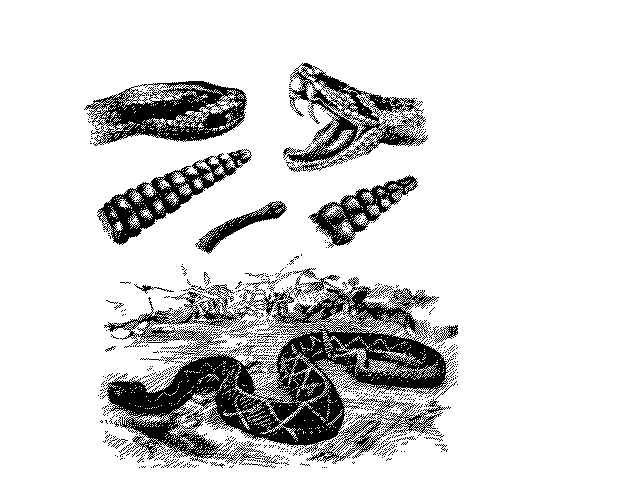

| Poisonous
Breath
Some people believe that hognose snakes (Heterodon platirhinos; also called spreading adders or puff adders) are able to mix poison with their breath and kill a person at a distance of over twenty feet. In reality the breath of hognose snakes is harmless. Hognose snakes exhibit perhaps the most elaborate bluffing behavior of any snake. They may spread their hoods, hiss, and even strike, although they don't attempt to bite. If they are continually harassed, they will flip over on their back and play dead. Hognose snakes rarely bite people and their bite is usually less bothersome than a bee sting. |
Eastern Hognose Snake (Heterodon platirhinos)
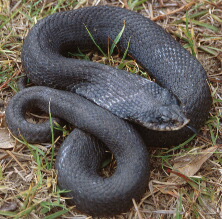 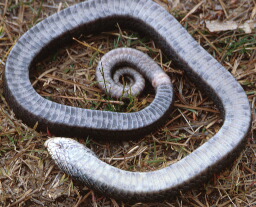
photo credit: Michael Dorcas |
Snakes Travel in Pairs
Another myth regarding snake
behavior is that snakes travel in pairs, the survivor seeking revenge if
one is killed. This myth is entirely false, snakes hardly ever travel
in groups or pairs. Snakes do not have any social bonds and would
feel in no way vengeful if one of its conspecifics were to be killed.
One possible explanation for this myth may be that in a prime habitat situation,
several snakes of the same species may be observed in a small area.
Another possible explanation for the origin of this myth could be related
to the typical reproductive behavior of snakes. During the mating
season a male snake may closely follow a female snake much as a buck deer
trails a doe during the rut.
| Striking
Unfortunately some people are uninformed about the striking capabilities of snakes. Many people believe that snakes can only strike from a coiled position. In reality, snakes can bite or strike from any position. Coiling does however, increase the distance that a snake can strike. A common inquiry relating to cottonmouths (Agkistrodon piscivorous), concerns their ability to bite underwater. Cottonmouths can in fact bite underwater, which makes sense since they live in wetland habitats, and feed on fish and water snakes. A related myth states that injured snakes die before
sundown. This myth is of course false. A mortally wounded snake
will usually die quickly, just like any other animal. Time of day
has no bearing on the death of any animal. The origin of this myth
may be related to the fact that nerve reflexes may cause muscle twitches
for several hours after death, resulting in movements of the body and jaws.
Because of the lingering nerve reflexes, even a dead venomous snake can
be dangerous.
|
Cottonmouth (Agkistrodon piscivorous)
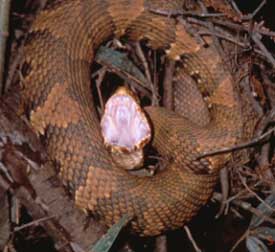
photo credit: Whit Gibbons |
| Sucking
Milk
In farming communities throughout the world, it is a common superstition that snakes suck the milk from cows and goats. In North America, the milksnake (Lampropeltis triangulum) acquired its common name based on this myth. Although milksnakes may be common around barns, they lack the anatomical structures necessary to suck. A snake drinks by submerging its head, or at least its mouth, in water and it then takes in water by expanding its body wall. Milksnakes are common in barns because barns house an abundant supply of small rodents, their primary prey. |
Milksnake (Lampropeltis
triangulum)
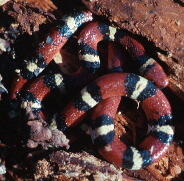
photo credit: Jeff Beane |
|